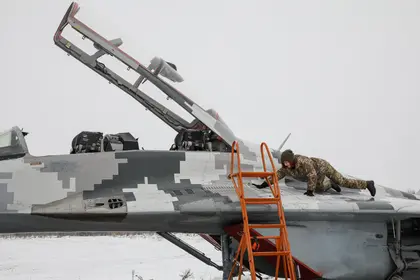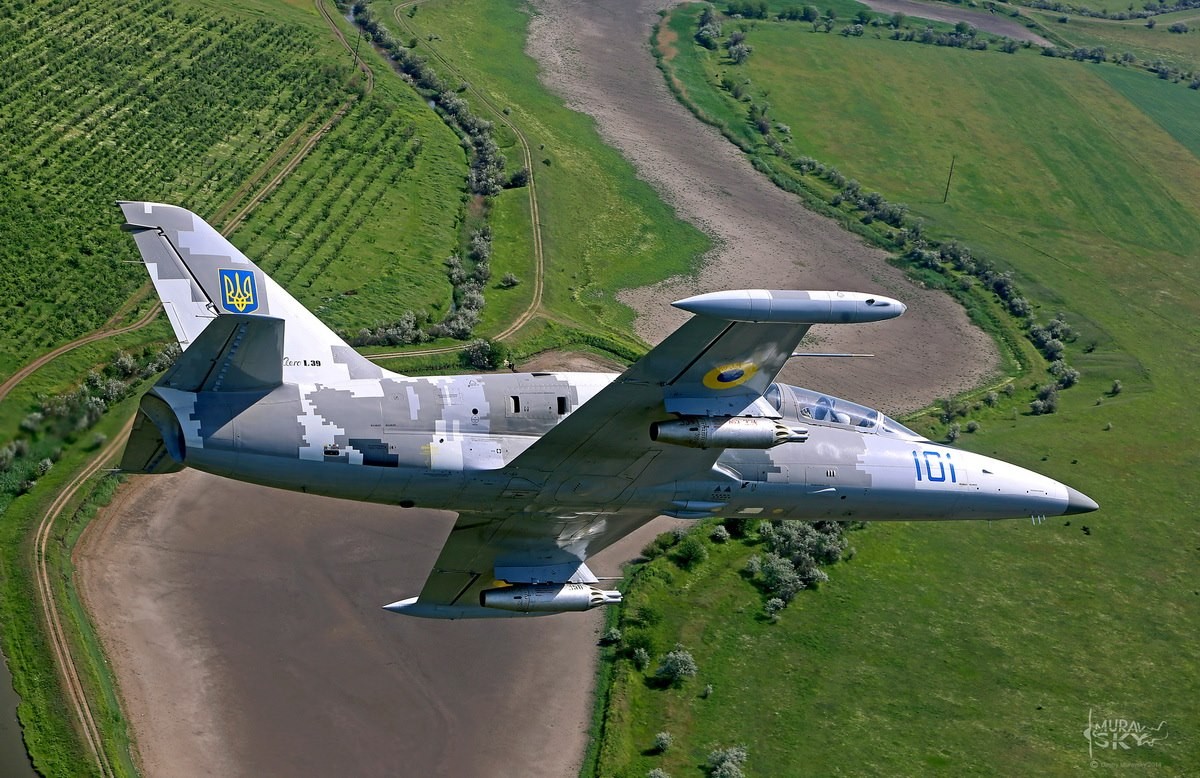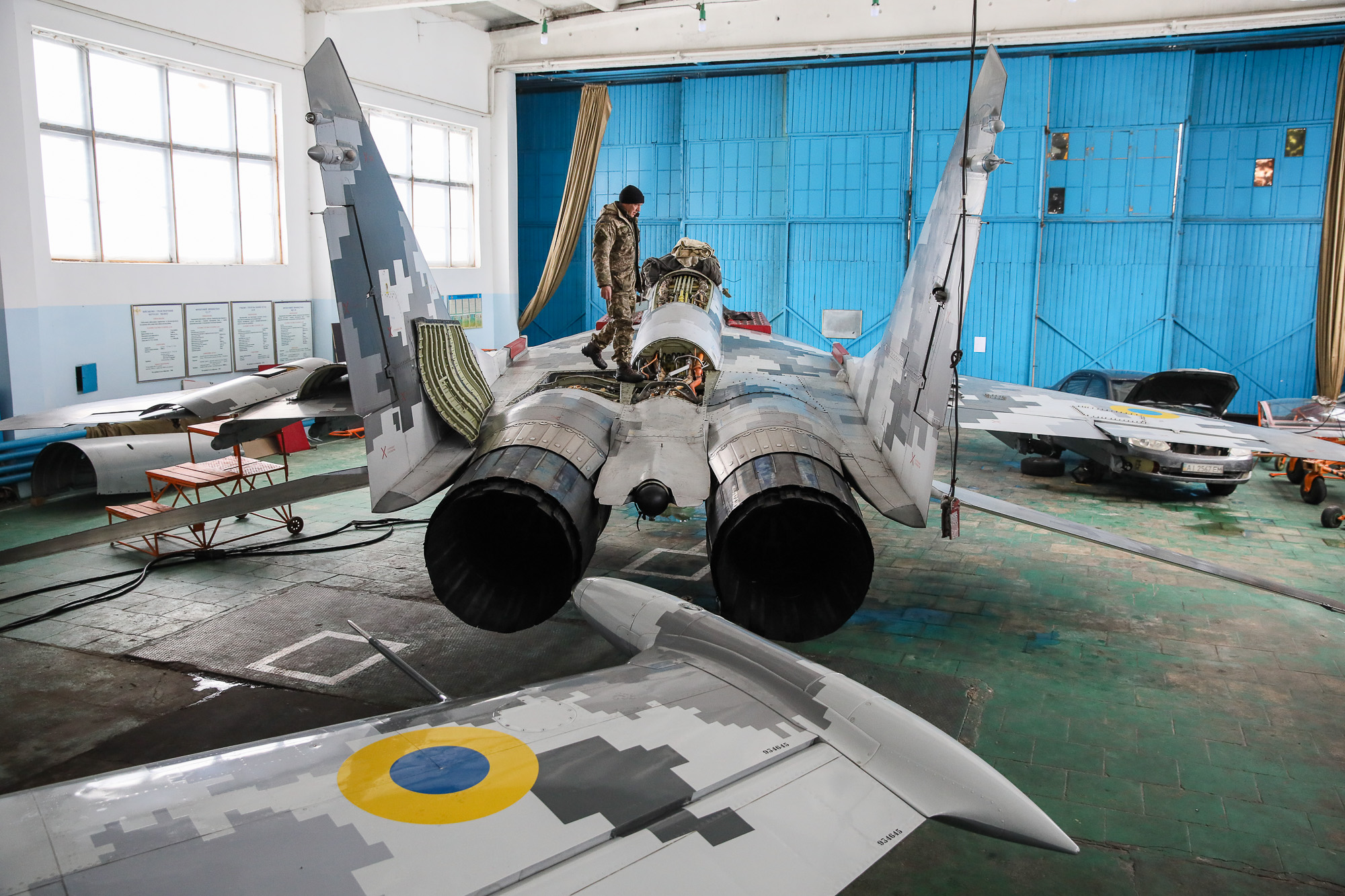A total of $12 billion — this is how much Ukraine should spend in the next 15 years in order to renovate its rapidly aging and weakening airpower, according to the military.
A concept of development through the year 2035 presented by Ukraine’s Air Forces (UAF) on May 20 seeks to gradually get rid of old Soviet-era machines and to introduce a brand new fleet of modern multirole fighters and transport aircraft.
The new vision also endorses the increasing role of unmanned aerial systems and therefore envisages deploying a swarm of killer drones supported by a dense grid of radioelectric warfare means.
The Air Forces say they have no time to lose, so they see their future in purchasing scores of ready-to-go aircraft abroad, particularly from NATO nations, within just the next few years.
Such a roadmap sets an ambitious goal of bringing Ukraine back to the club of the world’s most powerful air powers from scratch — although whether the country’s defense spending can afford such a massive rearmament program remains an open-ended question.
Multirole solutions
However, the plan outlined in the concept is more of a best-case scenario that will be seeing corrections depending on circumstances in the year ahead, according to the military.
“That is our wishes and dreams, put it that way,” as Lieutenant Colonel Yuriy Ignat, the UAF spokesman, told the Kyiv Post.
“This is how the high command sees the best way it wants to be moving in the foreseeable future. With consideration to the country’s financial capabilities.”
The need for a complete renovation of the Ukrainian military air fleet has been a pressing issue for years, moving very slowly from the deadlock.
According to the Military Balance 2019 factbook, the UAF currently have nearly 125 combat-capable aircraft of all main types, including jet fighters and attack aircraft, as well as transport airlifts, trainer airplanes, and attack helicopters.
The problem is that Ukraine’s youngest fighter jets are roughly 30 years old by now. And despite frequent repairs and modernization works, the military air fleet gets close to the limits of its operational lifespan.
As the UAF’s chief aviation engineer Major General Petro Skorenkiy told the Kyiv Post in February 2019, “as early as within the next 10 years, we need to start replacing the whole air fleet, squadron by squadron.”
The 15-year-long renovation concept places a bet on saying goodbye to the variety of specialized Soviet aircraft like workhorse Mikoyan MiG-29 and Sukhoi Su-27 fighters, or Sukhoi Su-24 attack aircraft. Instead, the Ukrainian pilots propose adopting a universal solution in adopting a unitary multirole fighter.
This should be a 4++ generation jets such as Swedish Saab JAS-39E/F Gripen (costing $30-60 million apiece) or General Dynamics F-16 Block 70/72 according to the concept. Earlier, it became known that the UAF was interested in other candidates. In late April, the UAF top commanding officer Major General Sergiy Drozdov visited Pakistan assessing JF-17 Block III machines (nearly $30 million apiece).
And in August 2019, the UAF command was also reported to have visited Brasil to assess the locally produced light attack aircraft Embraer EMB 314 Super Tucano (sold starting at $14 million apiece).
In general, Ukraine needs to purchase and accept for service between 72 and 108 fighters deployed to at least 4 tactical aviation brigades by 2035.
The authors note that the lesser overall number of fighters (as compared to the present-time fleet) will be compensated by their modernity and technological superiority over the Soviet machines.
As soon as in 2021-2022, Ukraine must hold a tender and struck a contract to procure 6-12 new fighters so that the UAF could prepare infrastructure and train personnel. And by acquiring 8-12 fighters each year, the UAF will be able to replace its old fleet of MiG-29s and Su-27s by the end of the program, according to the concept.
In general, the UAF suggests spending a total of Hr 200 billion ($7.5 billion) on new fighter jets alone.
Immense expenses
Transport aviation presented by legendary Ilyushin Il-76s, and Antonov’s An-30 and An-26 has to be fully replaced, too, starting from 2030, according to the concept.
The military suggests spending a total of Hr 40 billion ($1.5 billion) to purchase a standard universal transport aircraft, optionally produced domestically — that is to say, by the Antonov — which are expected to be accepted in service in the quantity of 1-2 aircraft each year.
As a result, the UAF want to have once transport and support aviation brigade of advanced aircraft by the year 2035.
More Hr 35 billion ($1.3 billion) is suggested for spending on a trainer aviation brigade operating unspecified aircraft (capable of performing certain combat missions) meant to replace Ukraine’s ubiquitous Aero L-39 Albatros jet trainers in use since the early 1970s.
As judged from graphics published by the military, the UAF also wants to have a very serious swarm of attack and reconnaissance drones that would be almost equal to the fleet of jet fighters in terms of the number of vehicles operated. The first step toward that has already been made with the $69 million contracts to purchase 6 Bayraktar TB2 drone systems from Turkey in 2018.
Notably, the UAF intends to give the killer drones a major role in the future by creating at least 4 unmanned aviation brigades or regiments across the country by 2035, which would cost the military budgets at least Hr 30 billion ($1.1 billion).
The drones swarm is expected to be supported by 13 new radioelectric reconnaissance units scanning the national airspace’s low and medium altitudes, with the closest attention paid to Ukraine’s southern and eastern regions — naturally, in a bid to ensure tracking Russia’s activity.
Such an affair would cost the Ukrainian taxpayer over Hr 20 billion ($750 million) through 2035.
Missile air defense should be completely regenerated as well, according to the concept.
The UAF want to gradually ged rid of traditional Soviet systems such as Buk-M1, S-125, S-300P, or S-300V, in favor of 36-40 units of modern medium-range air defense missile systems. Among potential candidates suggested by the military, there is a Norwegian system NASAMS, which gained serious popularity across the world in recent years.
The UAF estimates potential expenses on the national medium-range air defense grid as reaching Hr 50 billion ($1.9 billion). Moreover, strategic value targets across the country are expected to be taken under the protection of 9-12 medium- and long-range air defense missile systems, such as famous French-Italian SAMP-T systems, or American systems Patriot, the attempted procurement of which would most certainly face numerous political obstacles.
The country should be ready to spend Hr 20-100 billion (up to 3.7 billion) on the stragetic-level missile defense, depending on who is going to win such a contract, the UAF says.
In general, the overall bill for creating a brand new, modern air force branch gets close to at least Hr 320 billion ($12 billion) for the next 15 years.
This is a stunning amont — especially given the fact it constitutes over 38 times the size of the UAF annual budget in 2019 (Hr 8.3 billion).
And it also suggests that the country should be spending at least Hr 21 billion ($780 million) a year — which is 8.5% of the country’s overall defense budget in 2020.
Nonetheless, as the concept authors say, even though the suggested expenses are currently beyond the financial capabilities of the Armed Forces, support from the government support and Ukraine’s international partners can make the program’s goal much more possible.
You can also highlight the text and press Ctrl + Enter






